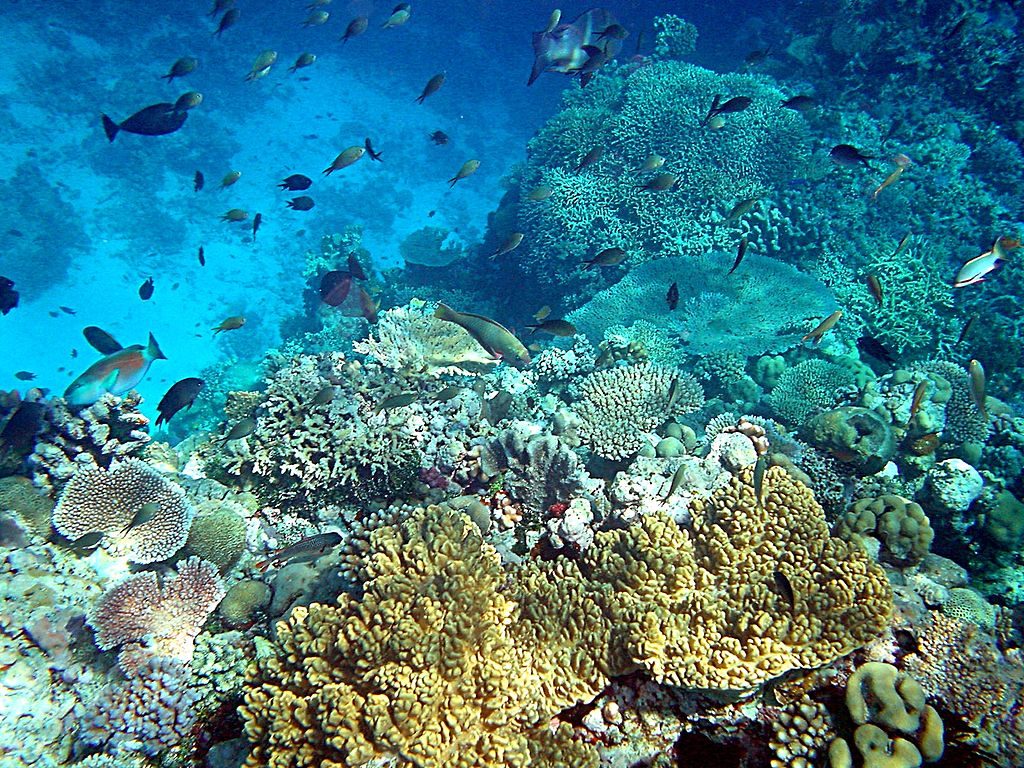We’ve all heard that rising global temperatures are bad for the environment. Typically, this is framed in terms of rising sea levels and melting Arctic and Antarctic ice and a host of other ecosystem level changes. Sometimes though, the ways these changes affect organisms are more difficult to understand. For years, coral reefs have been dying in a process called bleaching which has been linked to rising sea temperatures and lowered pH. However, exactly how that happens wasn’t so clear and a research study led by David Baker sought to answer exactly that.

Symbiodinium. Image source: Allisonmlewis [CC BY-SA 4.0, from Wikimedia Commons
Three scenarios were thought to exist for why the symbiodinium leave. The first being that when temperatures rise, the coral enter a stressed condition, causing impaired health and loss of the symbiodinium. The second, focuses on the symbiodinium becoming stressed and unhealthy, secreting toxins that cause the coral to kick it out. A third also exists, a sort of middle of the way perspective that’s a combination of the other two, where some balance that normally made the symbiosis work is lost causing one of the partners to fail. It’s this third scenario that guided the research team to ask: “do symbiodinium become parasites at elevated temperatures?”
To examine this possibility in light of the question asked, samples from one species of coral, orbicella faveolata, were gathered being careful to select for already healthy specimens. These coral samples were then setup in two conditions – an ambient temperature of 26°C (79°F) and a condition where the temperature was raised to 31°C (87°F) over a number of hours. This wasn’t picked arbitrarily, but was actually based on records of warming events at the sampling location in Belize, and served as a valid natural event to replicate. The specimens were then analyzed to see what changes took place and to trace the movement of nutrients between the coral and the symbiodinium.
The overall picture observed was stark. The coral at the high temperature was less healthy and productive compared to the coral in the lower, ambient temperature. However, symbiodinium showed the opposite! It was more productive at the high temperature and less productive at the low temperature. Therefore, the scientists concluded that temperature can change the roles of these two organisms. Their results showed that in the high temperature, the symbiodinium thrived and used the surrounding nutrients for itself, with less going to the coral. When the symbiodinium was less productive, there was more nutrition available for the coral. This represented a shift in balance and costs, essentially turning the symbiodinium from a partner to a parasite by definition, and lays the ground for a bleaching event to occur.
With the increased focus on preserving ecosystems, this finding adds another variable to consider when thinking about conservation. As temperatures rise, different organisms will respond differently to the new conditions. Even though the conditions tested by these scientists are not as severe as those that cause bleaching, they showed a very significant shift in one organism’s health as a result of the adapting physiology of its partner. If this is happening in one species of coral, it’s likely to occur in others as well, and this represents a key insight into how coral bleaching events quickly lead to ecosystem collapse. We are learning more and more each day about how delicately balanced the environment is. As we learn more about the complex links that exist in certain systems, perhaps we will uncover on a much bigger and global scale new ways of nursing stressed environments back to health.


